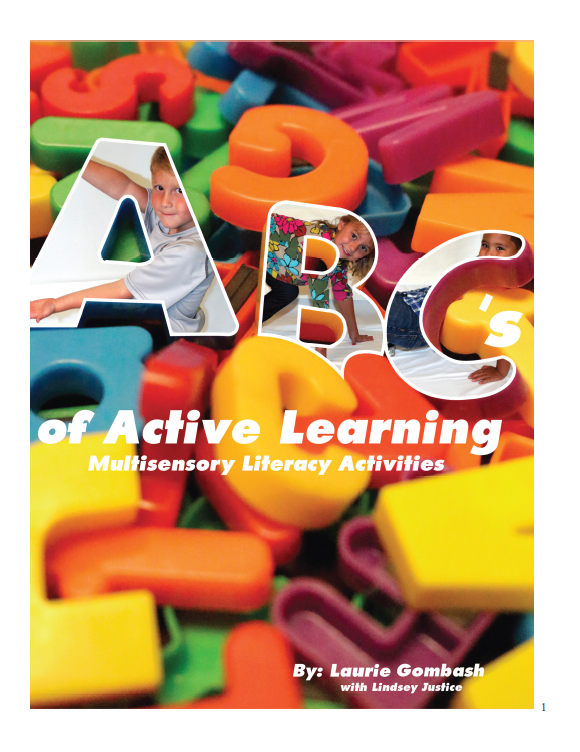Research Based Strategies for Teaching Letter Recognition – Try Handwriting
Teaching children how to learn their letters is an important skill in young children. When you consider different research based strategies for teaching letter recognition, do you think of handwriting practice? Maybe you think of writing the letters specifically, but research shows that writing in general can help with letter recognition.
Research Based Strategies for Teaching Letter Recognition
A recent study with preschool children investigated four different types of training. The children were divided into four groups: letter-writing, digit-writing, letter-viewing, digit-viewing. One example of the worksheets in the letter-writing and digit-writing groups included copying from an example the letters or digits in boxes. Assessments were completed before and after the school-based intervention that was twice a week for 6 weeks.
Results Following the Writing Interventions
After data analysis, the results indicated the following:
- the writing groups improved in letter recognition—one component of letter knowledge—significantly more than the viewing groups.
- the letter-writing group did not improve significantly more than the digit-writing group.
The researchers concluded that any handwriting may increase letter recognition because it facilitates gains in visual–motor coordination (Zemlock et. al, 2018).
Visual Motor Coordination and Letter Recognition
Did you know that visuomotor integration in kindergarten alone can predict later reading and math? After studying 259 kindergarteners through second graders, researchers reported that executive function and visuomotor integration tend to be delayed in socioeconomically disadvantaged children and can explain nearly half the achievement gap at kindergarten entry and visuomotor integration in kindergarten alone predicted later reading and math (Brock & Grissmer, 2018).
Visual motor skills play an important role in handwriting. Visual-motor integration skills have been shown to be related to the ability to copy letters legibly (Daly et. al, 2003).
When it comes to written assignments, reduced visual-motor integration may contribute to the poor spatial organization of written work as well (Barnhardt et. al, 2005).
Eye-hand coordination skills in children have also been shown to be related to math, reading and writing attainment (Giles et al, 2018).
Looking for visual motor activities? Check out this visual motor collection of 18 titles at a discounted price!
More Research Based Strategies for Letter Recognition
Additional research was completed using brain imaging to establish research based strategies for letter recognition.
Did you know that other research indicates that handwriting experience plays a crucial role in the formation of the brain network that underlies letter recognition?
Brain imaging studies indicated that only after the printing training did the visual regions that later become specialized in the literate individual for letter recognition become active.
Additional brain imaging results in 6 year old children helped researchers determine that only when the letters were self-produced did seeing the letters recruit the perceptual-motor network.
The researchers concluded that handwriting experience plays a crucial role in the formation of the brain network that underlies letter recognition (James, 2017).
Read all the details about the brain imaging studies here.
Looking for Handwriting Practice to Help with Letter Recognition?
Fading Alphabet includes worksheets that gradually increase in visual motor difficulty while decreasing visual input for letter formation. There are 26 double lined worksheets for boxed capital letters and 26 double lined lowercase letters (Handwriting with Tears style) OR Fading Alphabet – 26 Uppercase Letters and 26 Lowercase Letters Dotted Lined worksheets (Zaner-Bloser style).
More Resources to Help with Letter Identification
The ABC’s of Active Learning © offers readers tons of multisensory literacy activities based on each alphabet letter. This book, based on years of experience as school-based therapists, is written by Laurie Gombash, PT with a Master’s degree in Education and Lindsey Justice, OT. FIND OUT MORE.
References:
Barnhardt, C., Borsting, E., Deland, P., Pham, N., & Vu, T. (2005). Relationship between visual-motor integration and spatial organization of written language and math. Optometry and Vision Science, 82(2), 138-143.
Brock, L. L., Kim, H., & Grissmer, D. W. (2018). Longitudinal Associations Among Executive Function, Visuomotor Integration, and Achievement in a High‐Risk Sample. Mind, Brain, and Education, 12(1), 23-27.
Daly, C. J., Kelley, G. T., & Krauss, A. (2003). Relationship between visual-motor integration and handwriting skills of children in kindergarten: A modified replication study. American journal of occupational therapy, 57(4), 459-462.
Giles, O. T., Shire, K. A., Hill, L. J., Mushtaq, F., Waterman, A., Holt, R., … & Mon-Williams, M. (2018). Hitting the target: Mathematical attainment in children is related to interceptive timing ability. Psychological Science.
James, K. H. (2017). The Importance of Handwriting Experience on the Development of the Literate Brain. Current Directions in Psychological Science, 26(6), 502-508.
Zemlock, D., Vinci-Booher, S., & James, K. H. (2018). Visual–motor symbol production facilitates letter recognition in young children. Reading and Writing, 31(6), 1255-1271.
Read More About the Four Components of Letter Recognition
Learning the letters of the alphabet is not as simple as one may think. Children may be shown flashcard after flashcard but not retain the letter information. Or perhaps a child can write all the letters of their name by rote, but cannot identify each letter. Read more about the four components of letter recognition.







